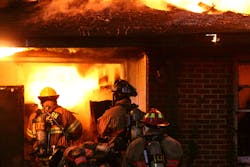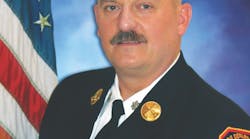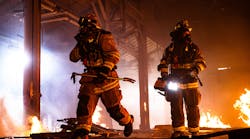Back in the early days of firefighting, response was far from organized. Because insurance companies sometimes paid premiums to the first company to put water on a blaze, it was monetarily beneficial for engines to get there first. Firefighters were often recruited with more of an emphasis on fighting each other than on fighting fires and, unfortunately, tactics such as hiding hydrants from rival companies were not unheard of. Thankfully, things changed over time, and a logical series of assignments was developed, first with box alarms and paper run cards, then through computerized dispatch recommendations.
Today, while not totally foolproof, things normally run pretty smoothly—until someone decides to circumvent the system and self-dispatches to an incident. This creates concern on several levels. When a department or company responds uninvited, it changes the availability of units at a time when apparatus will be most in demand. With the proliferation of automatic aid, rapid intervention teams (RITs) and lane-blocking strategies, initial assignments have become correspondingly complex. Even if the self-responders advise dispatch of their intent, it creates an immediate gap in coverage, and raises concerns that the incident commander (IC) may not be aware of these additional inbound resources. When these resources are individual firefighters who have decided to respond, there is less likelihood that either dispatch or the IC will be aware of their presence or their intentions. This leads to the potential for unaccounted personnel freelancing on the scene—a situation that can have potentially deadly consequences.
Dangerous situations
In January, a firefighter in Arkansas was mistaken for a burglar and killed while on an EMS run. While he was operating as a member of the assigned department at the time, this underscores a danger associated with responding alone in a privately owned vehicle. In situations where this singular deployment is self-initiated, this danger increases. Firefighters operating in a freelance mode will not be privy to any communications conducted by mobile data terminals or text messaging, and even if equipped with a scanner or portable radio will not have critical messages directed specifically toward them. They may therefore be responding blindly to emergencies where the address has changed, conditions have escalated, or units have been requested to stage due to law enforcement activity.
As incidents of violence continue to rise, so does our exposure to harm. In fact, the State of Connecticut in its Model Procedures for Fire Department Response to Hostile Situations specifically warns against self-initiating a response to certain incidents, such as active shooter events, in that, “these persons [firefighters] become part of the problem rather than the solution. Safety and accountability issues are only some of the problems caused. If not formally requested, do not Self Dispatch.”
For the volunteer fire service, the advent of scanners, pagers and mobile scanning applications and GPS provided increased opportunity for call-jumpers. Now anyone within driving range of an incident can be there relatively quickly, sometimes even before the official response. Not all of this is negative. To be fair, there are documented cases where firefighters acting independently have assisted in suppression and rescue operations. However, the loss of accountability created by freelancing cannot be ignored. There is also a marked difference between being in the neighborhood by providence and travelling cross-country to insert oneself into a scenario. The National Volunteer Fire Council (NVFC) has adopted a formal position on this matter, stating, in part, “The NVFC opposes freelancing or self-dispatching, as it can lead to miscommunication, causing safety and health issues for firefighters, first responders and citizens.
The IAFC also weighed in on this matter, stating, “Uncontrolled and uncoordinated arrival of resources at emergencies cause significant accountability issues as a result of personnel freelancing and creating additional safety risks to firefighters, civilians and others who are operating within the parameters of the incident action plan. Chaos at the scene occurs, creating additional safety risks because these companies or individuals are not aware of the overall strategic plan … Unplanned resources in many cases block roads, create traffic jams, restrict access and ultimately affect the safety of those firefighters who are operating at the scene by denying them needed resources. Freelancing of personnel and fire companies adversely impacts incident management systems and require that the Incident Commander assign more personnel to control and coordinate these resources that were not requested … Lives are at risk when fire companies or personnel leave their local communities, thereby reducing the level of protection and support should an emergency occur, or when other firefighters perform contradictory operations or interfere with assigned units performing their duties.”
One particularly onerous type of self-dispatching involves incorrect assignments or territorial disputes. In these cases, a company or department overhears a response sent to another agency for an address they believe to be in their first-due territory. When dispatch is immediately notified of the alleged error, it can be addressed. However, when units decide to blindly respond, an entire range of negative outcomes can be triggered. In addition to the downsides discussed elsewhere, there is an increased risk of accidents from apparatus crossing paths, and even the potential for confrontation at the scene.
Natural disaster response
While self-dispatching is typically associated with fires and quickly developing incidents, natural disasters also provide opportunities for this phenomenon to occur. During Hurricane Katrina, for example, it is estimated that between 150–200 firefighters responded unannounced to the New Orleans area every day, greatly exceeding the capacity of the staging area.
Even the World Trade Center tragedy was impacted by undocumented responses. Sixty of the 343 firefighter fatalities were off-duty personnel. While by no means lessening the dedication of these fallen brothers, there is also no denying that their presence provided complications. Those arriving individually likely had no radios. The names of many who were in quarters at the time and responded with their companies did not universally make the riding lists that provided accountability. This issue was directly addressed by Fire Commissioner Nicholas Scoppetta during his swearing-in ceremony in December 2001. According to The New York Times, his remarks included that, “without minimizing the heroism of every firefighter involved in the rescue effort, the department would work to create a more orderly process given the possibility of an event of similar magnitude in the city's future.”
In sum
Whether small town or big city, volunteer or career, self-dispatching undermines integrity of the response scheme. Without an accurate and current picture of resource status, neither the dispatch center nor ICs can make the informed and intelligent decisions necessary to maintain a safe operating environment.






